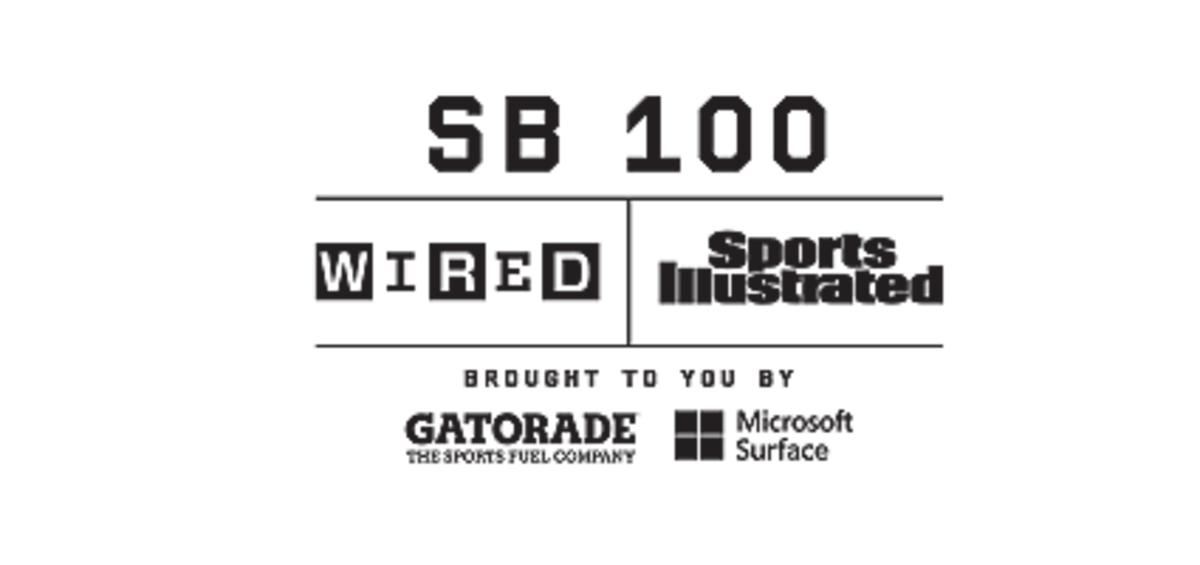Envisioning the stadium of the future
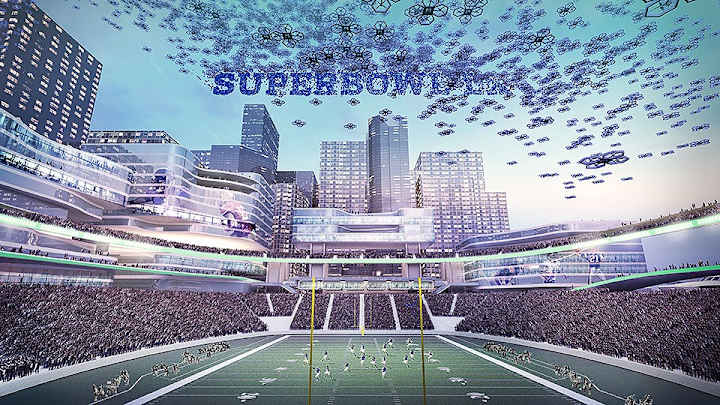
Eighty years ago men in gray suits and spiffy hats gathered in stadium bowls and sat stoically while they watched football. Sure, that’s far from today’s live NFL experience, but you can expect the stadium of the future to present an even more dramatic shift in football consumption. Such is our rate of progress.
Envisioning exactly what that future might look like requires imagination rooted in the practical direction of current innovations. For this SI turned to the world’s largest sports architecture firm, Kansas City–based Populous. “We think about these stadiums every day—how they’re changing, how our fans are changing,” says Scott Radecic, Populous’s senior principal and architect.
So what can we expect? Here’s Populous’s take on the NFL stadium of tomorrow.
We Are the World
Radecic remembers an NFL owner once telling him that only 7% of NFL fans will ever walk through the doors of a stadium. As the league pushes toward a larger global footprint—think London and Mexico City, for now—and grows its international base, that percentage of attending fans will only drop. Enter Populous’s concept of “remote live sites,” NFL-branded locations around the world that will function hand in hand with similar locations within the league’s stadiums. “People love to have a social experience, they love to be together,” says Radecic. “If they can’t be at the stadium, these remote live sites will engage fans.”
Fully immersed in the technology of the day, these live sites in urban locations would give faraway fans the opportunity to interact with a live game. Massive screens and ribbon boards would relay the sights and sounds of the in-stadium experience. But don’t think of these as glorified sports bars. Beyond the game, stations within each site would allow for learning—critical for a growing international audience that’s still picking up the nuances of the NFL product—and interacting. Those stations might include opportunities to predict future plays based on the game’s flow, interactive virtual-reality experiences (including putting the viewer in the game being watched) and even hologram projections of the contest, all of it flowing around multiple bars and lounge experiences, mixing technological interactivity with social elements.
“No longer do people want to be just spectators—they want to be participants,” says Radecic. “And this is all possible. You can be in another country and still find a way to participate in a live event.”
The NFL Stadium of the Future

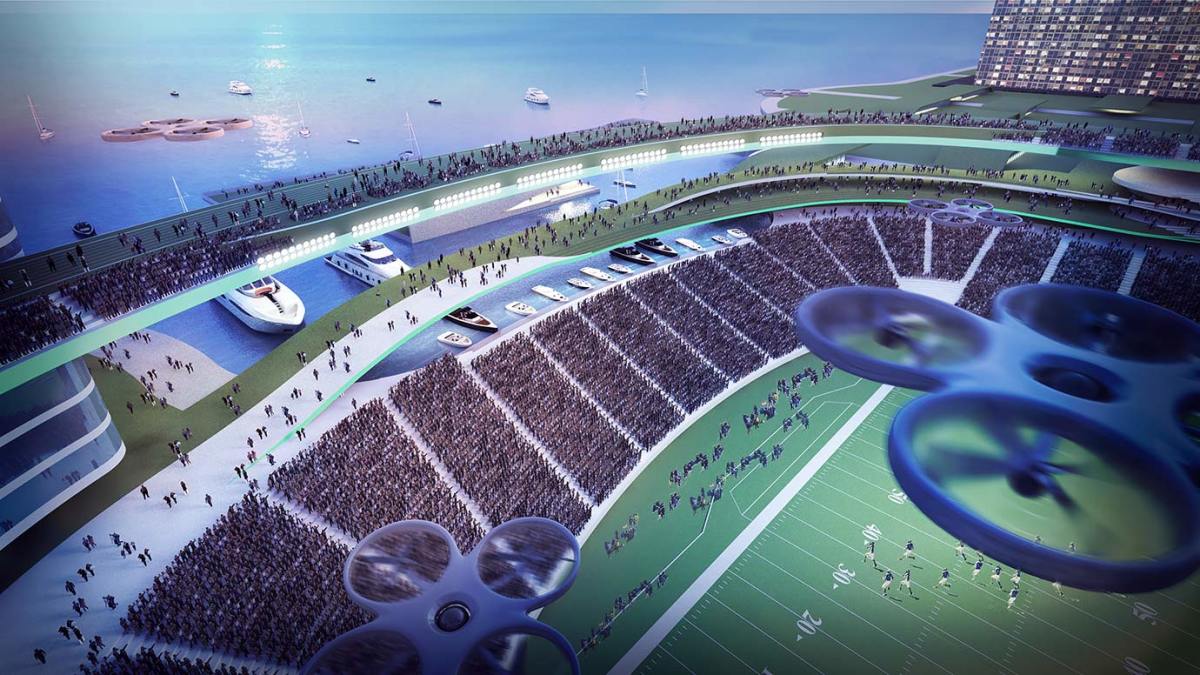
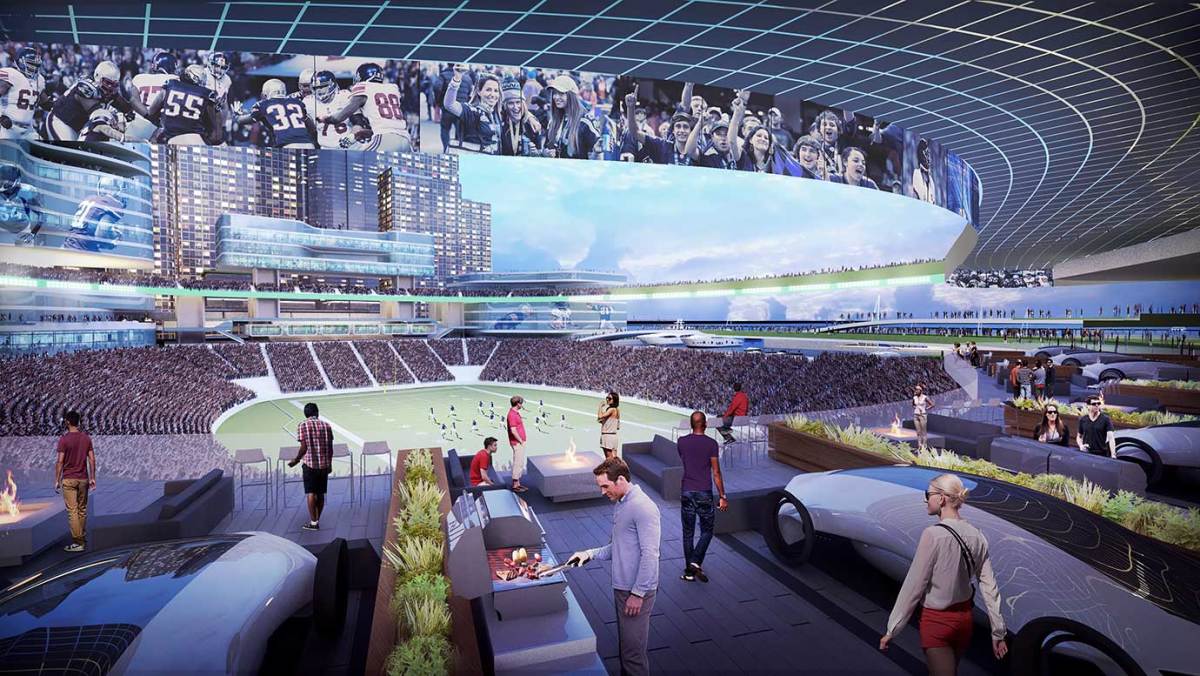
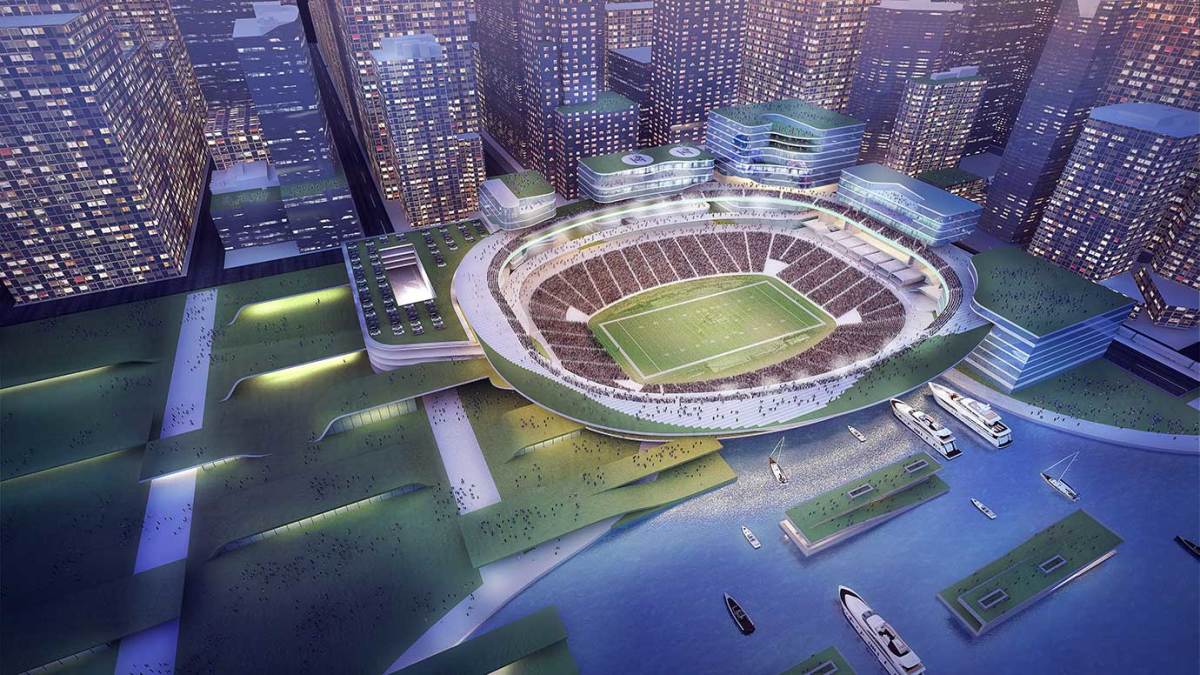
Urban Outfitters
Don’t expect to see 80,000-seat megastadiums in the future. The idea of the single-purpose NFL building is already starting to erode, says Populous architect Greg Sherlock, and it will completely fade away in the long term.
The venue of the future, he suggests, will hit more than one need in a city: “Could the building serve a dual purpose? Integrate the community in recreation and entertainment?” Populous’s predictors say yes; they expect that in the future they’ll be designing stadiums in urban centers with functions that extend outside football, making them viable 365 days per year.
This goes beyond what we now think of as multiuse. Imagine a downtown office tower that on most days holds, say, a law firm. On one side that office faces a busy downtown street. But on the opposite side is a football field. Now you have office spaces that can be turned into suites on NFL Sundays.
Look for new entries in the Super Bowl 100 series, presented by Gatorade and Microsoft Surface, at SI.com/SB100 and Wired.com/sb100
Chapter 1, Oct. 7 TRAINING
Chapter 2, Oct. 28 EQUIPMENT
Chapter 3, Nov. 18 STADIUMS
Chapter 4, Dec. 9 CONCUSSIONS
Chapter 5, Dec. 16 MEDIA
Chapter 6, Dec. 30 VR
Chapter 7, Jan. 6 NFL IN SOCIETY
Chapter 8, Jan. 13 TRACKING
Chapter 9, Jan. 20 STRATEGY
Chapter 10, Jan. 27 SB 100
ROAD MAP TO
THE FUTURE
How will fans access this inner-city, multipurpose Colosseum? Populous envisions large mass-transit centers connected directly to stadiums, with train rides replacing the old soccer-style marches that fans make into arenas. And like the office tower that looms large over one end zone, perhaps another section of the stadium has a massive parking garage attached to it—only instead of walling off the garage from the action, as we see today, that garage serves the city’s commuters during the week and becomes a massive tailgating venue on weekends, with fanatics driving right up to their vantage point.
Building on the idea of urban connectivity and entertainment, Populous sees the stadium’s fringes serving as a downtown park on off-days, allowing dog walkers and stroller pushers a regular connection to the venue and giving the city a better use of space. “The urban park becomes a place,” says Radecic, “where this future stadium might integrate the community.”
In the house
There will be seats. There will always be seats. There just won’t be as many. As stadium sizes shrink to fit within urban cores and mesh with their many uses, we’ll come to expect something like 30,000 lower-bowl seats for the more traditional fans who still want to stay close to the action (even if they often leave their seats in order to enjoy the rest of the stadium’s unique experiences).
But that upper bowl? It won’t be anything like it is now. In its place: fresh perspectives and entirely new vantage points—the office tower on one side, the tailgating parking garage on another. Altogether the football experience is bound to feel more like today’s baseball stadium, where you can meander around the field without ever losing contact with the game. Imagine a mixture of city bars with back-patio or rooftop areas that activate for each game, providing views onto the field. Or maybe boardwalk areas that allow people to walk right through the venue. Hey, if the city has a waterway, why not let kayakers float right up? Populous asks. You want premiums? On game day that helipad atop the corner office can access the most expensive seat in town. And if you can’t afford that high-up view, Populous imagines a sort of drone zone, where stadium-goers can rent camera-equipped drones and create personalized live-game feeds from up high.
The variety of experiences will prove limitless, and they’ll be dictated heavily by the local culture. The idea of the upper bowl will take on a new meaning, with potentially dozens of “neighborhoods,” each with a specific game-day feel and non-game-day use. This focus on social gatherings will allow people to grow more connected with each other over the sport they love. “Fewer people are going to sit in a seat,” says Radecic. “More people [will be] up and moving around.”
The way Populous sees it, the root desire of watching a game in a live environment with like-minded fans will not have changed 50 years from now. But the way we accomplish that will. Just don’t expect gray suits and spiffy hats.
